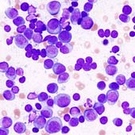Addition Of Thalidomide To Standard Treatment For Elderly Multiple Myeloma Patients Increases Efficacy (ASCO 2010)

Results of a Phase 3 trial showed that the addition of thalidomide (Thalomid) to Velcade (bortezomib), melphalan (Alkeran), and prednisone (referred to as VMPT), followed by long-term treatment with Velcade and thalidomide (VT), may become the new standard of care for elderly multiple myeloma patients. The results were presented by Dr. Antonio Palumbo of the University of Turin, Italy, on June 6 at the American Society of Clinical Oncology (ASCO) annual meeting in Chicago.
Dr. Palumbo and his colleagues compared VMPT followed by VT maintenance, which they hypothesized to be the “best possible treatment approach for elderly patients,” to the current standard of care, VMP.
“The use of the four-drug combination dramatically increased the response rate,” as well as the progression-free survival, said Dr. Palumbo.
In this study, 511 patients at least 65 years of age received either VMPT-VT or VMP without maintenance for nine 6-week cycles. The dosages of VMPT and VMP were identical, and the VT maintenance therapy consisted of 1.3 mg/m2 Velcade twice monthly and 50 mg thalidomide daily.
In March 2007, the dosage of Velcade was lowered in the VMP and VMPT therapies from a twice-weekly infusion to once-weekly in order to address a high patient discontinuation rate due to side effects of peripheral neuropathy (nerve damage to the extremities that can cause pain and tingling sensations).
The Velcade reduction decreased the rate of peripheral neuropathy from 13 to 18 percent to 2 to 4 percent, and it reduced discontinuation rates from 16 percent to 4 percent. Although low-dose Velcade dramatically improved issues with peripheral neuropathy, it did not reduce the efficacy of the overall treatment, as patient response rates remained unchanged.
After nine cycles of treatment, patients responded better to VMPT than VMP. There was a particularly significant difference in complete response rates (38 percent vs. 24 percent). Additionally, more patients on VMPT achieved at least a very good partial response (59 percent vs. 50 percent). Likewise, patients on VMPT were more likely to achieve at least a partial response (89 percent vs. 81 percent). Maintenance with VT did not increase the response rates.
The survival rate after three years was similar for the two groups: 86 percent of patients receiving VMPT plus VT maintenance were still alive, and 84 percent of the patients receiving only VMP were alive.
“Probably, we are going to have a median overall survival of 6 years,” Dr. Palumbo predicted. “We were moving just a few years ago from a median survival of 3 years. We are now going to approach 4, 5, and probably within this study, a 6-year median survival.”
Also at the three year mark, the progression-free survival rate was 54 percent in the VMPT plus maintenance group, and 40 percent in the VMP group.
“If you consider the best treatment available today, the progression-free survival is usually around 2 years,” said Dr. Palumbo. “The addition of the fourth drug is moving from an expected remission duration of 2 years to an expected remission duration of 3 years.”
Dr. Palumbo went on to explain why the VMPT-VT regimen is particularly effective. “The four-drug combination was mainly increasing the complete response rate … The maintenance approach is prolonging the remission duration. So, here we combine the high complete response rate coming from the four-drug combination with the maintenance approach prolonging remission duration.”
The safety of the two treatments was similar, but there was a higher rate of serious side effects among the patients who received VMPT-VT. Serious side effects included low white blood cell counts (30 to 35 percent of patients), low platelet counts (20 percent), and low red blood cell counts (10 percent).
Several physicians in attendance were interested in replacing thalidomide with Revlimid, either just in the maintenance arm (e.g. VMPT-VR) or both in the upfront therapy as well as the maintenance (e.g. VMPR-VR). Dr. Palumbo expressed interest in using Revlimid as part of the maintenance therapy, but cautioned that low white blood cells associated with Revlimid might decrease the efficacy if used in the upfront therapy.
Dr. Palumbo concluded by saying, “[VMPT-VT] is a new, better standard of care for elderly patients because the progression-free survival was significantly superior” than VMP alone, which is the current standard of care.
For more information, please refer to abstract 8013 on the ASCO meeting website.
Related Articles:
- None Found

